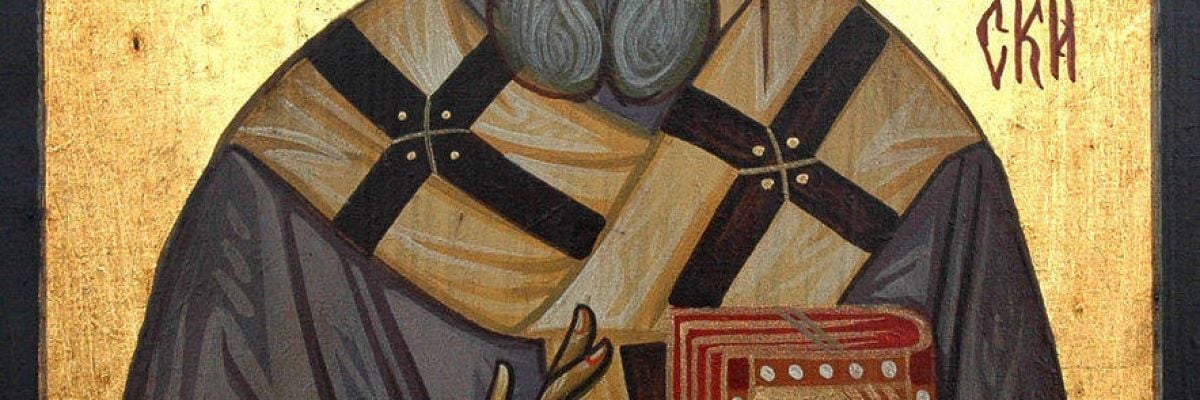
Who among us does not long to go back and witness firsthand certain moments in Catholic history? Certain decisive moments. Here are a few of mine:
On the eve of the battle of Lepanto, Don John of Austria silenced his quarreling admirals without raising his voice. “Gentlemen,” he said. “The time for counsel has passed. Now is the time for war.” Imagine the stunned—yet impressed—look on the face of the Venetian sea veteran Sebastian Veniero, three times Don John’s age. Or imagine hearing the Carmelites of Compiègne chant the Veni Creator Spiritus as they processed to the scaffold days later the Terror ended. Or imagine watching the diminutive Catarina Benincasa tell, with typical Sienese grit, Pope Gregory XI comfortably set up in Avignon, “Esto vir!” and point him back to Rome. Great moments all.
And here is one more to fire the heart. Imagine being present on the floor at the Council of Nicaea. See the splendor of Constantine’s court. See the heroic survivors of the Diocletianic persecution bearing their scars (perhaps comparing them with a little bravado as men will do), some without eyes and some without tongues. See St. Nicholas delivering a roundhouse blow to the jaw of the heresiarch Arius. See Bishop Alexander of Alexandria holding forth in defense of the divinity of Jesus Christ. And see, amidst it all, a brilliant deacon, not yet thirty, eyes flashing, confident in God: Athanasius.
Athanasius. He was decisive.
I do not mean that he was good at making decisions, although he was. I mean that at the moment when “the whole world groaned and was amazed to find itself Arian,” as St. Jerome put it, God raised up one man to grasp and hold high the banner of orthodoxy. Like all heroes whom history later locates at decisive moments, Athanasius was larger than life. Epic, as young men say today.
The life of Athanasius is an epic. His clerical career spanned over a half a century. He served as bishop of Alexandria, the See of Saint Mark, for forty-five years. He knew five popes and five emperors. He endured five exiles totaling nearly two decades. His exiles and adventures took him all over the empire, from Rome in the southwest corner to Trier, Germany, in the northwest, to Constantinople and Nicaea in the northeast, and to Tyre and Alexandria and the deserts in the southeast.
His mind was honed among the fathers at the Alexandrian School, where revealed truth and Greek thought sparred and united to give Christendom the first extra-scriptural formula to plumb—in so far as possible—an unfathomable mystery: the relationship between the Father and the Son: “homousion.” Or, as Catholics are now blessed to say, “consubstantial.”
Whatever thoughts this improved translation of this line of the Credo causes to surface in our imaginations every Sunday, we might include some contemplation of the full-bore street riots with which the faithful reacted to the heterodoxy of Arius and his followers. In our own impoverished age, it is difficult to conceive of ordinary men coming to blows over a theological question, but to cast our minds back to such a time can help. The persecutions of the first three centuries of the Church tempered the heart of the Bride of Christ. The unwelcome heresies that exploded at the very moment when the Church was at last free of political tyranny threatened to break that heart.
If Athanasius’s mind was formed in the school at Alexandria, the forging of his heart came a little later in the company of St. Anthony of the Desert and the ascetics who formed a community around him. The proto-monastics, whose practices Athanasius would bring to Rome on his second exile (nearly two centuries before St. Benedict) took seriously the injunction in the Gospel of Mark—our Lord’s words to the rich young man: “Go, sell whatsoever thou hast, and give to the poor, and thou shalt have treasure in heaven; and come, follow me.”
In and out of season, Athanasius followed our Lord. Nicaea should have settled the matter, but the Libyan priest Arius—the first Christian rock star—loved too much the limelight his theological novelties brought him. A tall, thin, and not terribly attractive fellow with stringy hair, he had a peculiar but seductive speaking style that attracted, especially, the attention of women. He carefully cultivated the appearance of one who led a life of severe austerity.
He was the chief promoter, if not the author, of the greatest threat the Church had yet faced and would face until the Protestant rebellion: the heresy that there was a time when the Son did not exist and that he was created by the Father. It is easy to see where it leads: a creature can change. If a creature can change, he can sin. If the Second Person of the Blessed Trinity was created, he could sin. This heresy has not disappeared, by the way. It is a principle tenet of both the Mormons and the Jehovah’s Witnesses.
In the age of Athanasius the heresy was hardly confined to the followers of warmed-over Seventh-day Adventism. It captured most of the episcopacy, and even Pope Liberius was badgered into signing a semi-Arian formula. Arius came to a bad end, suffering a death so undignified that any God-fearing man could see that it was a divine judgment upon him, but by then the heresy had taken hold in most of the halls of power, secular and religious. Inseparable as Church and state were in the fourth century, the heresy threatened the eternal salvation of souls and also the temporal peace of the Empire. Ever in the eye of the storm was Athanasius, whose fortitude and perseverance fired the hearts of his flock. On two occasions when emperors intruded Arian bishops into Athanasius’s see, the faithful of Alexandria took matters into their own hands.
An endless supply of calumniators attempted to discredit Athanasius. If we cannot disprove a man’s arguments, they thought, let us attack his character. Their accusations were fantastic. They said he had severed the hand of a certain Bishop Arsinius to use it in rites of necromancy. Producing a withered hand at a public hearing they sought to entrap him. When Athanasius produced the allegedly dismembered bishop, alive and well, he enjoyed the moment a little, first drawing the intact left hand from the bishop’s cloak, and then the right. “Perhaps Arsinius was born with three hands?” he suggested with a smile.
He had ravished a nun, they said. The girl held forth in great detail all she had suffered at the hands of Athanasius. One of his entourage, posing as Athanasius, approached her. “And did I do this to you and this?” he asked. “And this?” “Yes, you did!” the girl responded before seeing she had been trapped. She fled the court.
Still the accusations came. He had withheld, they said, Alexandria’s grain allotment to the imperial city Constantinople. He had harassed his clergy. When all these failed, he was accused of just plain not getting along: he was divisive. Like Thomas More, who stood in the face of the Church’s next great trial twelve centuries later, Athanasius cared little for going along to get along. He cared for the truth. And, like More, Athanasius not only had the courage to suffer for the truth but also the courage to act alone.
In his Arians of the Fourth Century, Bl. Cardinal Newman calls Athanasius the “one who, after the Apostles, has been a principal instrument by which the sacred truths of Christianity have been conveyed and secured to the world.” Newman’s history is the place to go to know Athanasius, but it can be heavy lifting. The Catholic seeking an understanding of this giant of a saint might start with Athanasius’s Life of Saint Anthony. (I recommend the Penguin collection that also contains the lives of other early Fathers.)
Next, pick up a favorite of C.S. Lewis’s, Athanasius’s On the Incarnation of the Word. Of Athanasius, Lewis wrote, “Only a master mind could, in the fourth century, have written so deeply on such a subject with such classical simplicity.” Athanasius concludes the work with the very words by which he so ardently lived:
For the . . . right understanding of the Scriptures there is need of a good life and a pure soul, and for Christian virtue to guide the mind to grasp, so far as human nature can, the truth concerning God the Word. One cannot possibly understand the teaching of the saints unless one has a pure mind and is trying to imitate their life . . . . Anyone who wishes to understand the mind of the sacred writers must first cleanse his own life, and approach the saints by copying their deeds. Thus united to them in the fellowship of life, he will understand the things revealed to them by God and, thenceforth escaping the peril that threatens sinners in the judgment, will receive that which is laid up for the saints in the kingdom of heaven.
A version of this appeared at Crisis.com in 2012.



